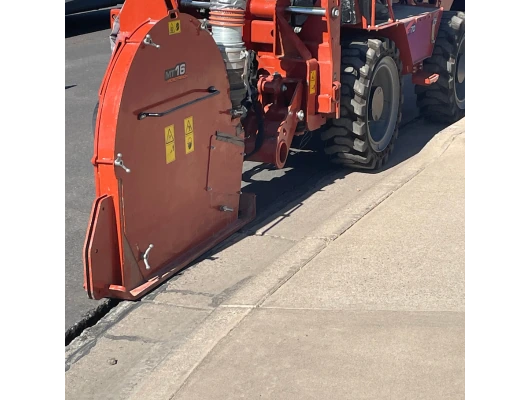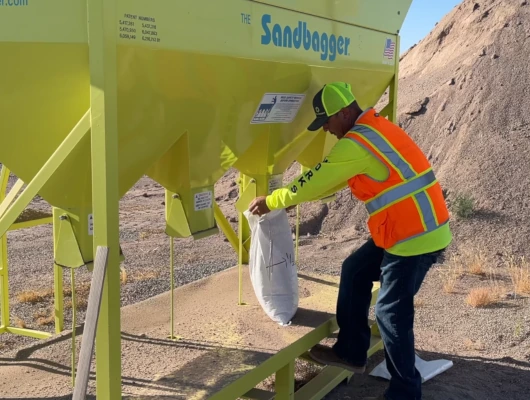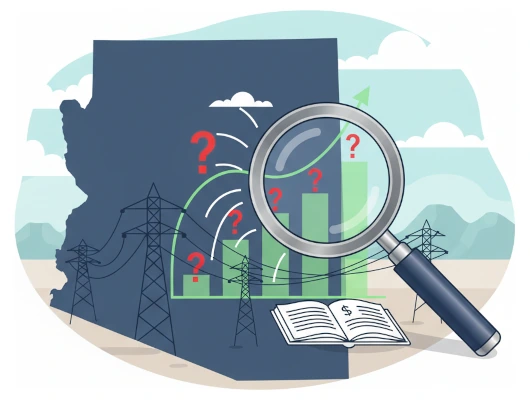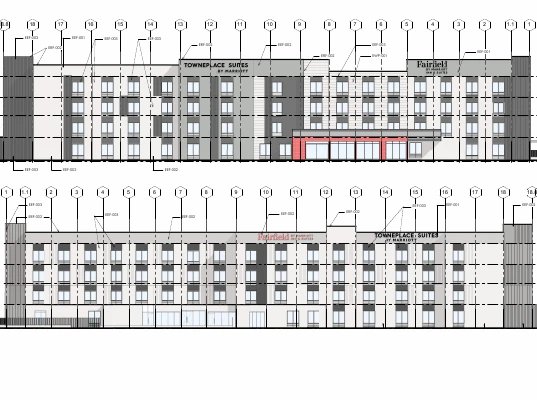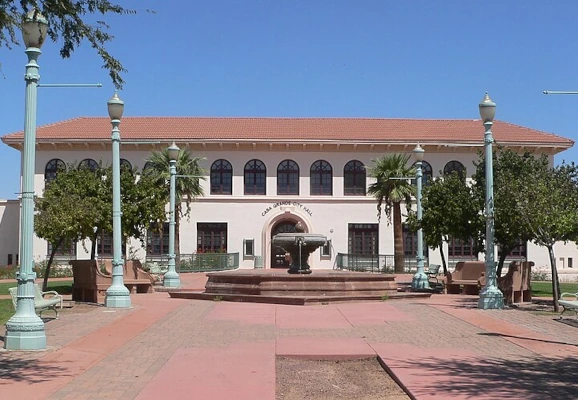Key Points
- Post-pandemic internet demand has surged dramatically due to remote work, online learning, and video conferencing, creating need for faster fiber installation methods
- Micro-trenching cuts shallow channels (16-24 inches deep, 1-4 inches wide) in pavement to install fiber cables up to 80% faster than traditional methods with fewer utility conflicts
- Proposed standards include asphalt “T-top” patches for long-term road protection, though industry seeks more cost-effective alternatives
- Balanced approach aims to protect road integrity while accommodating industry needs for modern installation solutions
- Strategic application would use micro-trenching when utility easement installation isn’t feasible, with traditional methods for intersections
- Public input period runs through July 22, with final adoption hearing scheduled for August 6
- Public feedback can be submitted online at the county’s microtrenching standards website
Board Reviews Micro-Trenching Methods to Meet Growing Internet Demand
Pinal County supervisors reviewed proposed standards for micro-trenching during their June 11 work session, exploring a method that cuts thin, shallow channels into pavement to install fiber optic cables faster than traditional methods and help meet surging demand for high-speed internet access.
County Engineer Chris Wanamaker presented the proposal to the Board of Supervisors, explaining how the technique could speed up fiber installations while potentially creating new challenges for road maintenance.
Rising Demand Drives New Installation Methods
The pandemic fundamentally changed internet usage patterns, creating unprecedented demand for high-speed broadband. Before 2020, broadband demand grew predictably and steadily, but remote work and online learning sparked a dramatic increase in need for reliable internet access.
“Pre-2020 broadband demand was growing predictably, slowly and steadily over time. But of course after the pandemic, we started to see much more demand for high-speed internet,” Wanamaker explained to supervisors. “We got all our Zoom calls and conference calls and internet-based learning for students in schools.”
The federal Broadband Equity Access and Deployment (BEAD) program provides another way to incentivize getting high-speed internet to everybody. Internet service providers are trying to find ways to get high-speed internet to every home in America, leading to industry demand for new methods to install fiber optic infrastructure quickly and at lower costs.
Current Installation Challenges
Companies wanting to install fiber infrastructure in Pinal County must currently meet traditional trenching or boring standards, as the county currently has no micro-trenching standards. Wanamaker described these traditional methods as expensive, time-consuming, very disruptive to the public, requiring a lot of traffic control and creating potential utility conflicts.
Traditional methods require working in public utility easements, typically located in residents’ front yards, while micro-trenching would avoid this by using roadway space instead. “If you’ve got landscaping in your front yard, grass or bushes or even other types of hardscape features, it can be a problem when a utility wants to come in and put something underground. It can be very disruptive,” Wanamaker explained.
Public utility easements also contain service laterals like sewer lines and electrical lines that run from the street utilities to individual houses. “So there’s always a potential for a utility conflict there in that public utility easement,” Wanamaker explained. “There’s many other utilities that are in that easement. So sometimes it’s much quicker and easier and safer to work within the pavement.”
The Push for Standards
“Existing state of practice when it comes to this type of installation method is kind of a hodgepodge of different ideas. Many jurisdictions don’t even have micro-trenching standards. Some allow it, some don’t,” Wanamaker said.
When presented with this challenge, Wanamaker said he decided to be proactive: “Let’s come up with our own standards. Let’s try to make something that balances the needs of the industry but also protects the public, protects our roadways and protects our infrastructure that we already have.”
What Is Micro-Trenching?
Micro-trenching is a method for deploying fiber optic cables for internet service and communications in thin, shallow trenches, typically in the pavement section. These trenches are anywhere from a half inch to four inches wide and 10 inches to 24 inches deep.
Wanamaker provided some images of successful micro-trenching deployments shown in the images below:
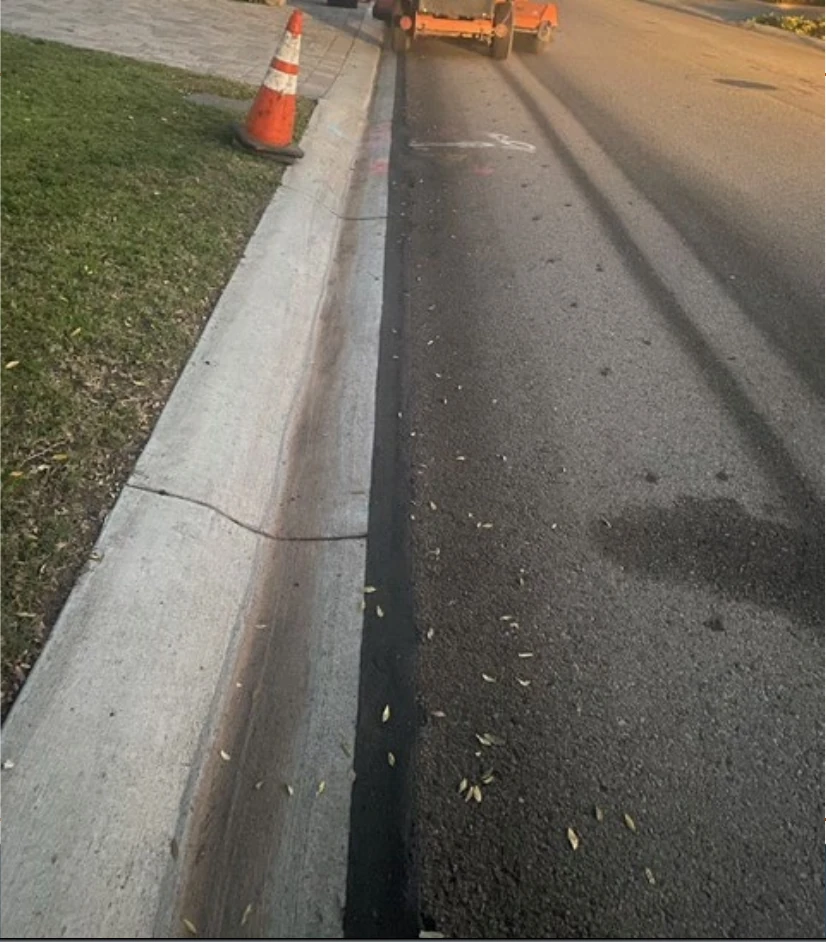
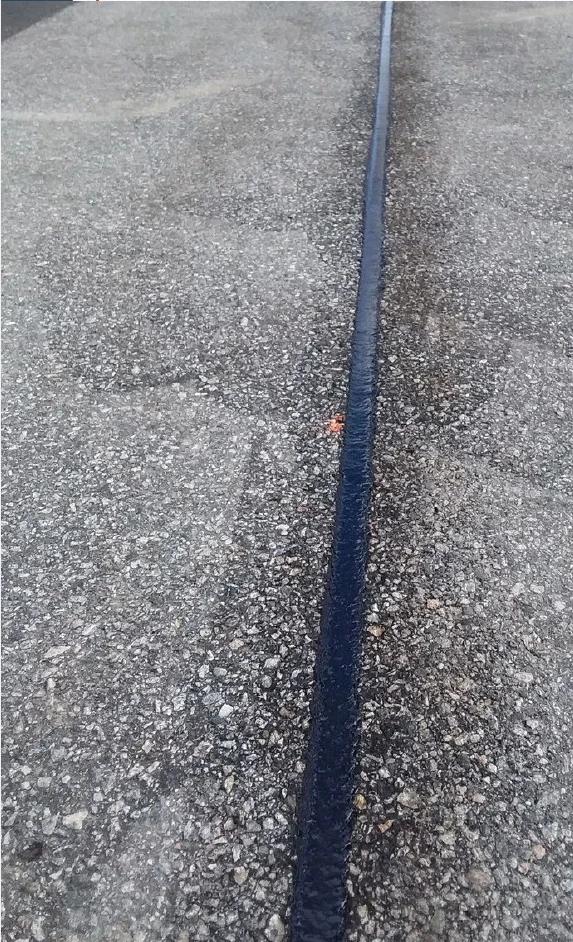

Proposed County Standards
Pinal County’s draft standards include several key requirements:
Basic Specifications:
- Maximum one micro-trench on each side of the road
- Trench width: minimum 1 inch to maximum 4 inches
- Depth: minimum 16 inches to maximum 24 inches deep
- Top of conduit to be no shallower than 12 inches deep
- Location: between 6 and 18 inches away from gutter line (with curb and gutter), or minimum 24 inches from edge of pavement (without curb and gutter)
- Up to two conduits per trench allowed
Construction Requirements:
- Slurry backfill that is structurally capable of supporting traffic loads and supporting lateral loads of pavement
- MAG asphalt T-top covering, 24 inches wide, 2.5 inches thick minimum
- Road crossings need to be perpendicular
- To be used for telecommunications fiber only
- Tracer wire required
Restrictions:
- Avoid manholes, avoid survey monuments, water valves, or anything else
- Avoid placement in the wheel path
- Avoid conflicts with roadway striping
- Service laterals should be placed under concrete, curb, gutter, and sidewalk
- Intersection crossings requires traditional methods
- Vaults, pedestals, or anything else need to be behind the sidewalk in the public utility easement, or if there is no public utility easement, at the farthest edge of the right-of-way
Advantages of Micro-Trenching
The proposed method offers several benefits according to industry data:
Speed and Efficiency:
- Up to 80% faster than traditional installation methods
- Can install thousands of linear feet per day versus hundreds with traditional methods
- Less impact on traffic and the public due to speed of installation
Cost and Safety:
- Lower installation costs
- Less likely to hit or conflict with existing utilities
- Least amount of utility strikes per mile compared to all other methods (0.03 strikes per mile versus 13.97 for conventional trenching, according to data from the Fiber Broadband Association)
- Avoids working in public utility easements where multiple utilities create conflicts
Disadvantages and Concerns
Micro-trenching also presents significant challenges:
Road Integrity Issues:
- Every pavement cut introduces a weakness or weak point into the roadway
- Potential for structural failure, water infiltration, surface degradation and other issues
- Increased maintenance burden and increased costs over time if not done properly
Installation Problems:
- Quality control can be poor with micro-trenching
- Shallower depths of installation presents risks for maintenance
- Typical contractors who install other types of utilities don’t expect fiber utilities to be very shallow, creating potential for utility conflicts
- Non-continuous construction can create problems
“Anytime we cut the pavement it introduces a challenge for us,” Wanamaker told supervisors.
Examples of Failed Installations
Wanamaker showed supervisors the photographs below of problematic micro-trenching installations. The images revealed several common failure modes:
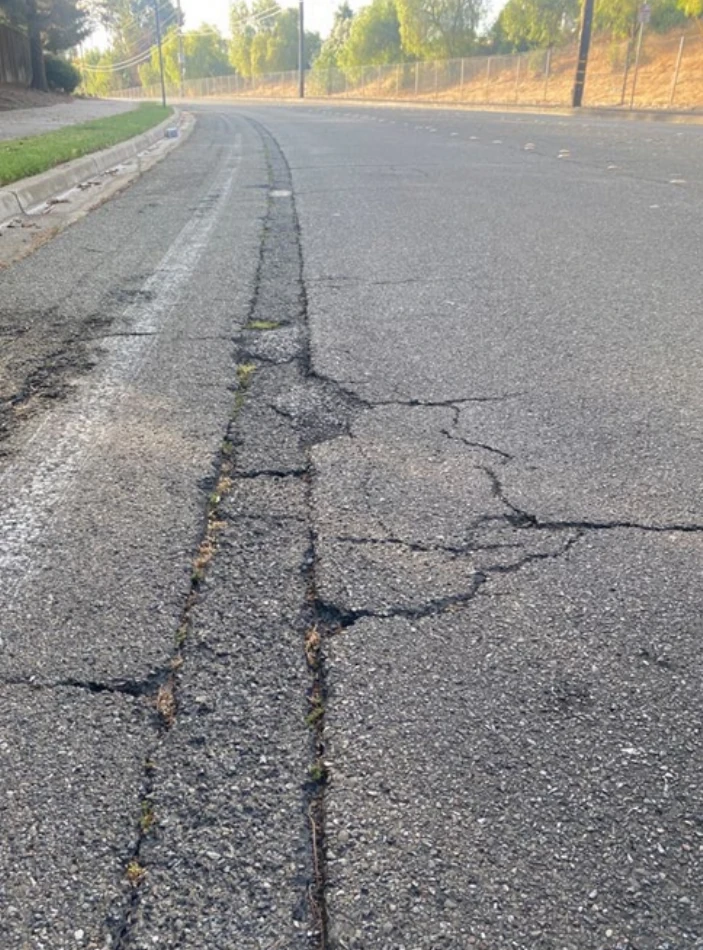
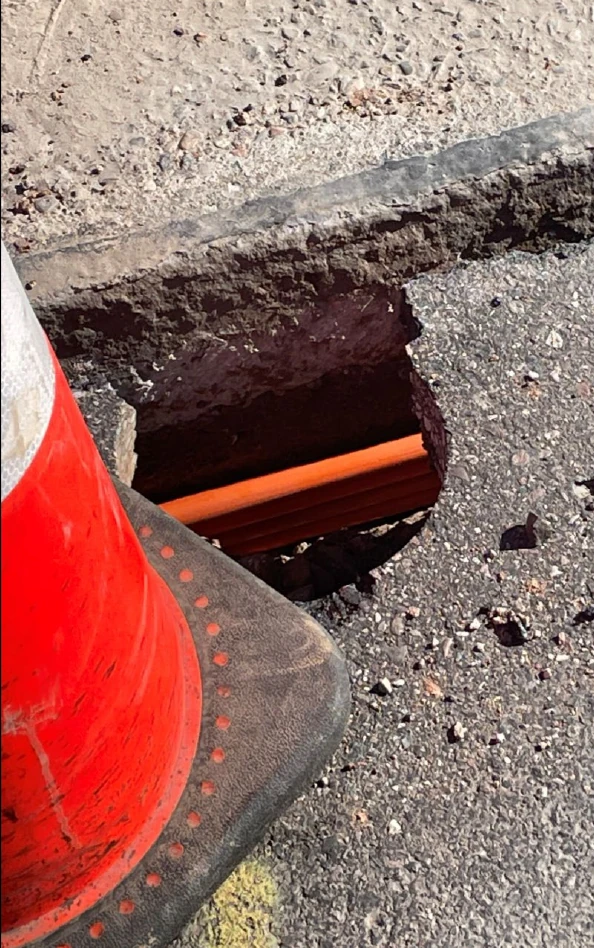

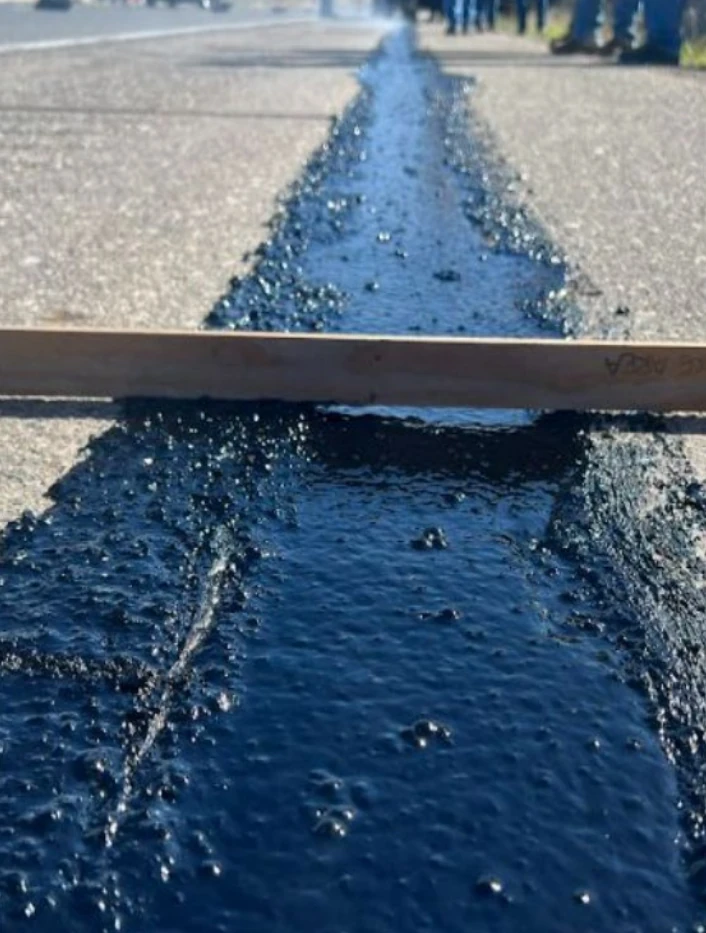
Mastic sealant/backfill slurry under-filling will cause water to pool. It can also catch car or bicycle tires. [Pinal County]
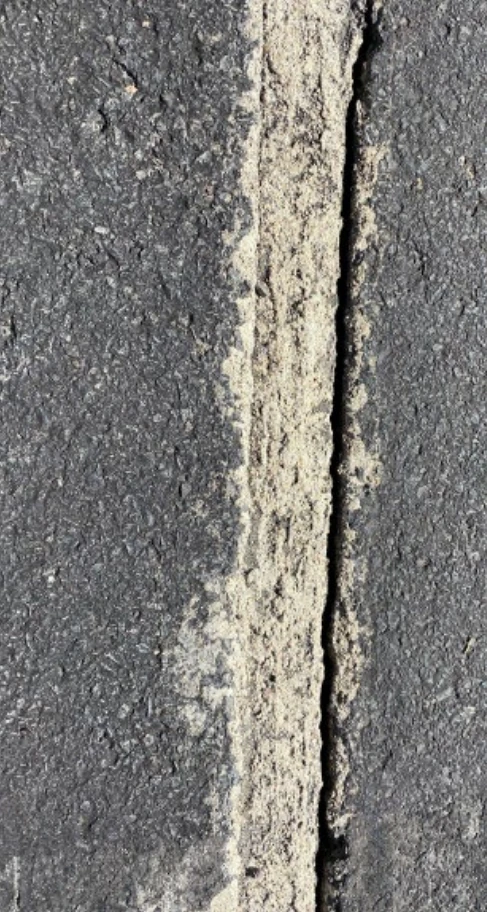

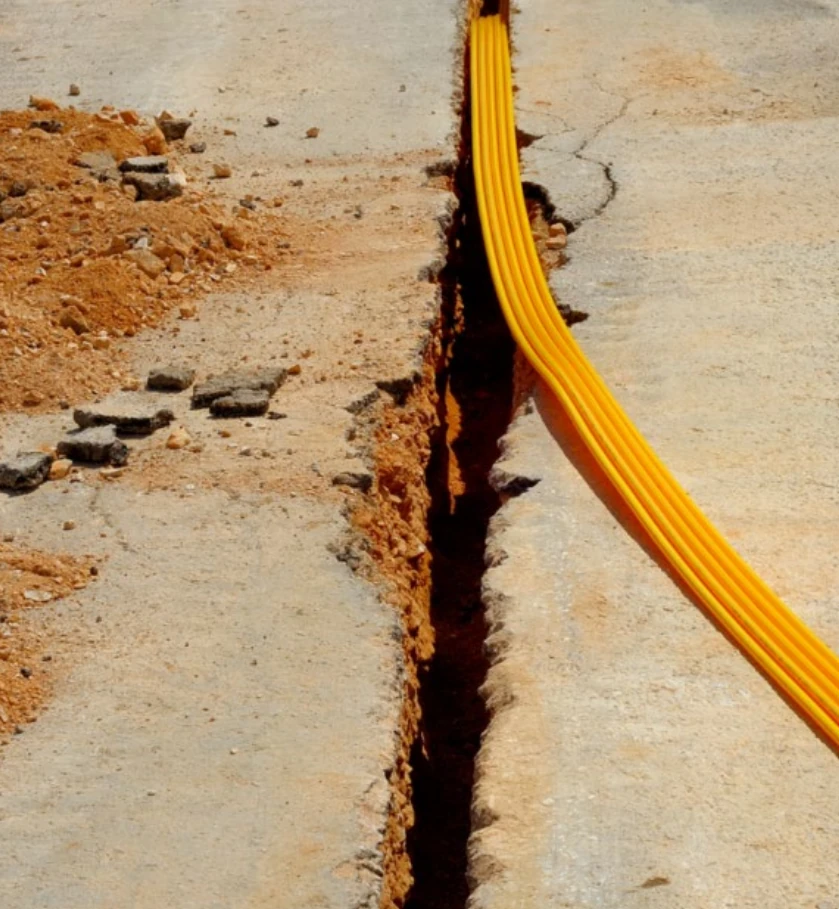
Road Quality Requirements
The county plans to restrict micro-trenching based on existing road conditions. The standards will need to look at existing roadway condition, with Wanamaker noting: “If it’s a chip seal road, probably don’t want to use micro-trenching. If the road is very poor quality, probably don’t want to use micro-trenching.”
Coordination with Road Work
Vice-Chairman Jeff McClure questioned whether micro-trenching should be coordinated with planned road maintenance: “Would it not be best to have it on the streets it’s scheduled to be milled and repaved rather than one that’s, ‘Oh, look, it’s freshly done, let’s cut a hole in it’?”
Wanamaker confirmed the county would evaluate each project through a hierarchy where micro-trenching wouldn’t necessarily be the first choice. “We would look at more traditional methods and see, does that make sense? Because again, we wanna protect our roadway, we wanna protect the public.”
The county’s existing pavement cut ordinance prohibits fresh pavement from being cut within the first year, and requires fees between one and two years after new pavement. Wanamaker emphasized the county tries to coordinate fiber installation work with its own projects and those of other companies to minimize public disruption.
Decision Matrix for Installation Methods
Chairman Stephen Miller suggested developing criteria to determine when micro-trenching would be appropriate. He envisioned scenarios where very little shoulder or very little room back into the public utility easement area would justify using roadway installation, but emphasized that companies shouldn’t be allowed to choose street installation when utility easement space is available.
Miller indicated scenarios where very little shoulder or room back into the public utility easement area might justify roadway installation, and said he probably wouldn’t allow cutting through intersections, preferring boring for those situations.
Warranty and Maintenance Concerns
Chairman Miller asked about inspection procedures, compaction testing, and material quality standards. He also inquired about warranty periods, with Wanamaker explaining the county currently has a one-year warranty but would need to update license agreements with companies to add additional provisions for extended warranty or additional practices to protect pavement.
Existing Standards from Other Jurisdictions
Wanamaker reviewed standards from several other agencies:
City of Mesa (Most Comprehensive):
- 2.5-inch wide trench maximum at gutter line
- 10 inches of cover on arterial streets, 6 inches on local and collector streets
- Avoid any concrete
- Provisions to address bike lanes with placement to the left of bike lanes
Town of Gilbert (Draft):
- 1 to 1.5-inch wide trench at lip of gutter
- Below the base course of the roadway to avoid affecting structural section
- Required slurry backfill and 6-inch-wide asphalt sealant
City of Scottsdale (Expired/Repealed):
- Instead of using mastic sealer, required milling a 24-inch-wide section and replacing with brand-new asphalt
- Created an asphalt T-top to prevent differential settling and water intrusion
ADOT (Project-Specific):
- 48-inch patch, more robust than Scottsdale but similar T-top design
Industry Feedback and Concerns
The county held a stakeholder meeting May 12 with about 50 industry representatives. The feedback included:
Industry Preferences:
- Requests for shallower depth than proposed to increase installation rate, since deeper installation costs more and is slower
- Preference to be against the curb not away from the curb, with companies believing this provides better results and is less likely to result in pavement damage
Cost Concerns:
- Concerns about the cost of T-top patch, with several companies noting this would make micro-trenching cost prohibitive
- Some feedback indicated the T-top requirement “may mean that we will just do traditional instead”
Agency Concerns
Wanamaker gathered feedback from other agencies through the MAG (Maricopa Association of Governments) technical working group and individual conversations. He found general hesitancy to allow micro-trenching because of essentially having utility shallower than what is normally allowed.
“There are a lot of the risks to the roadway that are still kind of unknown because this is still kind of new and there’s no standards out there,” Wanamaker explained.
The general consensus was that if agencies accepted micro-trenching standards, it should be limited to local or residential streets only. Most agencies agreed on requiring a mill and overlay or asphalt patch to prevent water infiltration, and that license agreements need to be updated to account for risks.
Public Notification Requirements
The proposed standards include extensive public notification requirements:
- Advanced public notification required when fiber company wants to install infrastructure
- Required signage, door hangers, and social media
- Construction done in one continuous operation with no phased construction
- Logical sizes for permits, like one neighborhood or one area at a time
- Night work may be required on arterial roads
Timeline for Adoption
The county plans to move quickly with adoption:
- May 12, 2025: Initial stakeholder meeting
- June 11, 2025: Board of Supervisors work session
- June 16, 2025: Publish Notice of Hearing, start 30-day comment period
- July 22, 2025: End of comment period, publish final standards
- August 6, 2025: Board of Supervisors adoption and public hearing
The county plans another industry stakeholder meeting during the public comment period to get more specific feedback and address concerns.
Supervisors Express Cautious Support
Board members showed interest while acknowledging uncertainties about the new technology.
Chairman Miller noted the experimental nature: “This is new, and I suspect that we’ll find in four or five years we might even have to tweak it a little bit, because there may be something we’re not seeing today that will pop up in time.”
He emphasized the need for collaboration with industry and finding the right balance: “We’re trying to find the sweet spot as far as what’s gonna give us the best product but yet still make it affordable to put this conduit in the ground.”
Future Considerations
The county expects to continue refining standards based on feedback. Several items remain under consideration:
- All other alternatives must be considered first
- Multiple users and exclusivity concerns
- Accommodations for bike lanes and wheel paths
- Service lateral placement requirements
- Assessment of existing roadway conditions
- Amendments and revisions to license agreements for more robust warranty provisions
Maricopa County is planning to adopt something this year, and MAG convened a technical working group in March to discuss the topic, though their timeline is much longer and the county needs to get something done sooner.
The Board of Supervisors will hold a public hearing and consider final adoption of the standards at their August 6 meeting. Public comments can be submitted at https://cleargov.com/arizona/pinal/county/projects/17026/microtrenching-standards.

